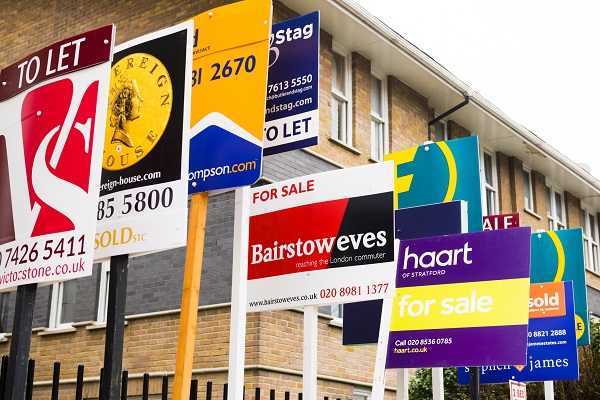UK housing most unaffordable since Victorian times
12th December 2022 09:33
by Alice Guy from interactive investor
Buying a home is one of the biggest financial commitments we ever make, but it’s become almost impossible for many to get a foot on the ladder. Find out the real reason why here.

House prices are now at their most unaffordable level since 1899: a time when Queen Victoria was still on the throne, average wages were less than £1 per week and children as young as six were working in factories.
In the last few years, house prices have soared and in 2022 hit 8.5 times the average UK annual salary, putting home ownership out of reach for millions of Brits.
We’re returning to a time when only the very rich could afford to buy their own home. Only, unlike Victorian times, the new aristocracy are not the landed gentry, but the older generations, who managed to get on the housing ladder when prices were more affordable, in the 1970s to early 2000s.
According to the Bank of England, “real house prices in the UK have almost quadrupled over the past 40 years, substantially outpacing real income growth.”
Rising wages and home ownership
In Victorian times an Englishman’s home was his castle, but that castle was probably owned by a rich landlord or a wealthy factory owner.
But all that was about to change. During the 20th century there was an explosion of wealth, lifting many working families out of poverty.
Real wages (adjusted for inflation) increased 60% between 1900 and the 1950s, then soared 140% between 1950 and 1980. Wages continued to rise in the late 20th century, growing 68% between 1980 and 2000, before slowing down in the early 21st-century when wages only grew 13% in real terms between 2000 and 2022.
During the 20th century, house prices fell to more affordable levels, bringing homeownership within the reach of many ordinary working families. In 1899, only around 20% of Brits owned their own home, but by 1960 around 50% of families owned their home and around 70% by 2000.
Rising wages were matched by a burgeoning housing stock as massive Victorian and Edwardian urban expansion was followed by large 1930s and post-war housebuilding programmes.
House prices were most affordable in the 1920s as wages soared by three times between 1898 to 1920, while house prices remained static. This brought home ownership within reach of the middle classes.
Between 1920 and the late 1980s, more and more people bought their own home, and house price affordability hovered around four to five times the average annual wage. Margaret Thatcher’s Right to Buy scheme, selling council houses to tenants at low prices, was hugely popular and a significant driver of home ownership during the 80s.
Unaffordability temporarily spiked during the second-world war, the mid 70s and the mid-80s, but never returned to the unaffordable levels of the Victorian period.
A return to a nation of renters?
Since 2000, house prices have become increasingly unaffordable, especially for first-time buyers.
A combination of housing shortages and cheap interest rates have pushed house prices to levels not seen since Victorian times. It now costs over 8 times the average salary to buy a normal family home.
The average age of a first-time buyer in 2022 is 34 years-old compared to 23-years-old in 1960. The average first-time buyer deposit is now an eye-watering £53,935. Brits in their 30s to 40s are three times more likely to rent than 20 years ago.
The wealth divide between the generations has never been greater, and many young people depend on help from wealthier older relatives to get on the property ladder.
- Five tax-efficient ways to pass wealth to your kids
- What the Bank of Mum and Dad needs to do right now
Today, almost 75% of those over 65 years-old own their homes outright, up from just over half in 1993. In contrast, home ownership among younger people has halved since the 1980s. In 2019, 28% of 25-34-year-olds owned a home, compared with 51% in 1989, according to figures from the Resolution Foundation.
For the younger generation, there could be light at the end of the tunnel as house prices are now beginning to fall, dropping back 0.9% in October and 1.4% in November (based on Nationwide House Price Index) and experts predict they could fall between 5% and 10% in 2023.
- Bank issues recession warning after biggest interest rate rise since 1989
- Here’s how UK interest rates compare with others around the world
But with rising interest rates, it will still be almost impossible for first-time buyers to afford their own home. House prices still have a long way to fall if ‘generation rent’ is going to become ‘generation buy’.
These articles are provided for information purposes only. Occasionally, an opinion about whether to buy or sell a specific investment may be provided by third parties. The content is not intended to be a personal recommendation to buy or sell any financial instrument or product, or to adopt any investment strategy as it is not provided based on an assessment of your investing knowledge and experience, your financial situation or your investment objectives. The value of your investments, and the income derived from them, may go down as well as up. You may not get back all the money that you invest. The investments referred to in this article may not be suitable for all investors, and if in doubt, an investor should seek advice from a qualified investment adviser.
Full performance can be found on the company or index summary page on the interactive investor website. Simply click on the company's or index name highlighted in the article.